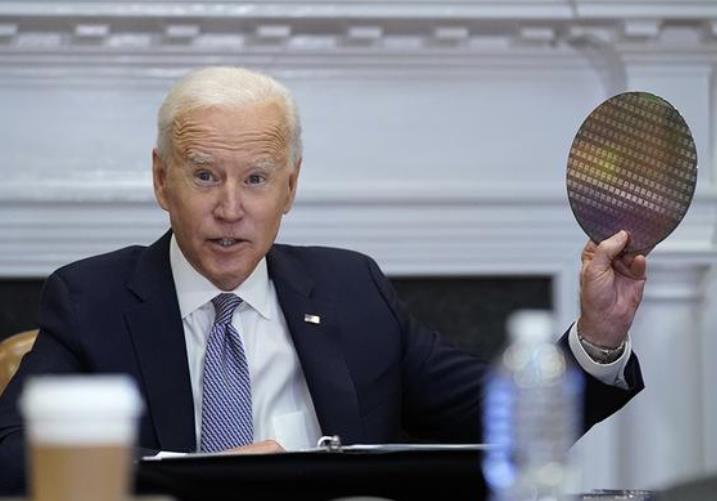As is well known, the United States has been continuously suppressing Chinese chips in recent years for fear of the rise of the Chinese chip industry.
Last year, the Chip and Science Act was introduced, providing $52.7 billion in subsidies to attract global chip manufacturers to set up factories in the United States and isolate China.
At the same time, strict restrictions have been imposed on these chip factories that receive subsidies from the United States, restricting them from building factories or expanding production in China.
Recently, US media reported that the US government has put forward clear and stricter restrictions on chip manufacturers applying for subsidies under the Chip and Science Act.
Among them, the process of logic chip manufacturing is harsh. According to the media, within 10 years, the production capacity of subsidized companies with mature processes of 28nm and above in Chinese Mainland will be expanded below 10%, the production capacity of advanced processes of 28nm and below will be expanded below 5%, and the investment for expansion will be less than $100000.
This means that no matter what kind of process you have, mature or advanced, you basically cannot expand production. Because of $100000, you may not even be able to buy a device.
Obviously, this policy is mainly aimed at TSMC. At present, in Chinese Mainland, TSMC has a wafer factory in Nanjing that can produce 28nm and more advanced 16nm chips.
Previously, it was rumored that TSMC would expand production of processes such as 28nm and 16nm in Nanjing, but now it seems unlikely to expand production.
In addition, Intel also has a wafer factory in Chinese Mainland, which produces chips with a process of more than 14nm, but the relative capacity is much less. It is not so important whether Intel will expand its production in China. After all, it is an IDM manufacturer, and there is no OEM competition.
So will this matter have a significant impact on TSMC movies? Of course, it is very large, because once it cannot be expanded, the market in Chinese Mainland can only remain the same at most. It is estimated that the next growing market will all be handed over to SMIC, Huahong and other local manufacturers in Chinese Mainland.
And is this market big or not? Very large. According to the data of 2022, TSMC’s revenue in Chinese Mainland accounts for about 11% of all revenue, about 55 billion yuan.
The scale of China’s wafer foundry market actually exceeds 200 billion yuan, and it is likely to reach around 400 billion yuan in the future.
Once TSMC can only hold onto these 55 billion yuan, then the rapidly growing and larger market in China will have nothing to do with TSMC. Even with the continuous expansion of production by SMIC, Huahong, and others, TSMC’s existing revenue of 55 billion yuan may not be guaranteed.
A few days ago, Zhang Zhongmou said that the United States launched various semiconductor policies to slow down the development of chips in Chinese Mainland, and he supported these policies.
Now it is impossible to expand production in Chinese Mainland, and then slowly lose the market in Chinese Mainland, which is also one of the results of the US semiconductor policy. What does he think of this result? Do you still support it?
